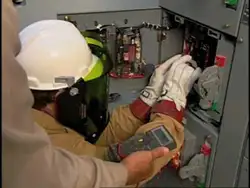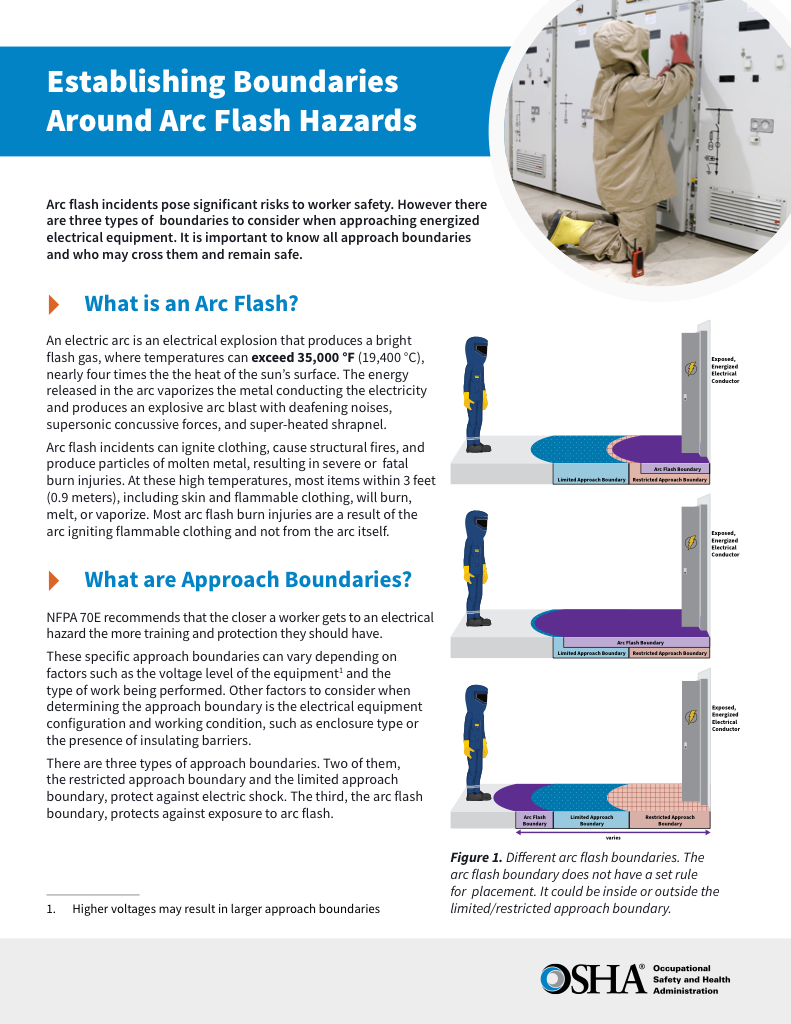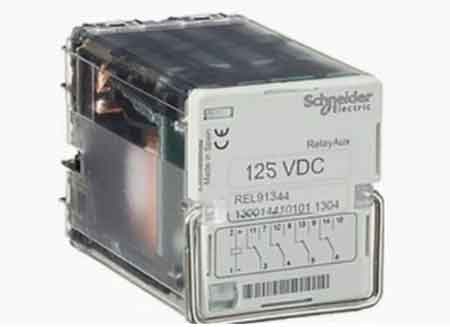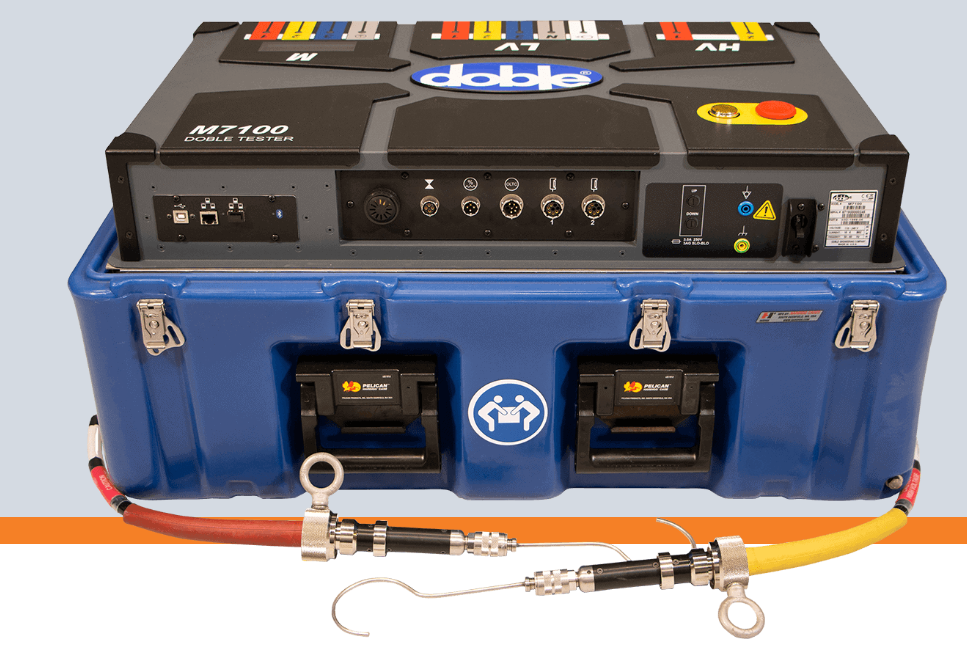Industrial Electrical Safety Explained

NFPA 70e Training
Our customized live online or in‑person group training can be delivered to your staff at your location.

- Live Online
- 6 hours Instructor-led
- Group Training Available
Download Our OSHA 4474 Fact Sheet – Establishing Boundaries Around Arc Flash Hazards

- Understand the difference between arc flash and electric shock boundaries
- Learn who may cross each boundary and under what conditions
- Apply voltage-based rules for safer approach distances
Industrial electrical safety ensures OSHA compliance through lockout-tagout, arc flash mitigation, NFPA 70E procedures, PPE selection, grounding and bonding, risk assessment, and preventive maintenance to control electrical hazards in factories and process plants.
What Is Industrial Electrical Safety?
Industrial electrical safety controls hazards using standards, procedures, PPE, and engineered safeguards.
✅ Apply NFPA 70E arc flash risk assessment and PPE boundaries
✅ Implement LOTO procedures for de-energization and verification
✅ Verify grounding, bonding, and GFCI protection in wet locations
Industrial Electrical Safety.
On average, every 30 minutes a worker is so severely injured on the job that they require time off to recover. and approximately three million electrical professionals are engaged in work where lockout/tagout procedures should be used each day. It is these sheer numbers that contribute to electrical-related violations being in the top 10 of OSHA violations. The two that continue to make the top 10 are electrical wiring methods and general electrical requirements. For clarity on employer duties, see the OSHA framework outlined in OSHA electrical safety guidance for practical context.
Visit Our AF Course Page:
electricityforum.com/electrical-training/arc-flash-training
The National Institute for Occupational Safety and Health (NIOSH) identify four main types of electricity-related injuries:
- electrocution
- electric shock
- burns
- falls
Understanding these categories helps teams apply procedures to protect against electrocution that are tailored to specific tasks.
To avoid injury or to mitigate injury it si important to ensure employees are properly trained and qualified for the job. A few safety tips to remember to help avoid injuries include:
- Isolate equipment from energy sources
- Test circuits and conductors every time before coming in contact
- Identify potential electric shock and arc flash hazards
- Only work on de-energized equipment and conductors
- Always lockout/tagout and properly ground equipment before you begin working
- Treat all equipment as live until lockout/tagout, testing and grounding procedures have been implemented
- Always wear proper Personal Protective Equipment (PPE) and clothing in areas where potential electrical hazards and arc flash situations are present
- Use insulated tools whenever possible
Embedding these practices into daily routines supports compliant electrical safety work that minimizes exposure to energized parts.
Electricity Today T&D Magazine Subscribe for FREE

- Timely insights from industry experts
- Practical solutions T&D engineers
- Free access to every issue
There are more than 300 electrocutions and some 4,000 injuries in the workplace each year directly related to electrical hazards. Although not the leading cause of workplace injuries, electrical hazards cause serious injury and death, and are costly to the employer. Often overlooked, grounding is a major component of electrical safety, as outlined in the OSHA manual in part 1910.305, subpart S, Wiring Design. Organizations can benchmark programs against electrical safety requirements to close gaps and improve accountability.
Good grounding creates a low-resistance path so electrical charges will flow safely away from the work area, so they won’t cause harm. Normally grounding is built in as a permanent part of the electrical system but should never be taken for granted. These principles align with proven electrical safety workplace practices that emphasize verification and maintenance.
Proper tagout procedures (of electrical boxes and equipment) are a major component of any safety program. “Tagging out” is in reference to locking circuit breakers or start-up panels, and attaching warning tags so that no other worker throws the switch by mistake. Clear labeling and documentation are essential elements within broader electrical safety procedures that prevent inadvertent energization.
In Canada, the Canadian Standards Association established in 2006 CAN/CSA-Z1000-06, Occupational Health and Safety Management Systems (OHSMS) as the national standard. Included in section 4.4.2 and 4.4.3 are the preventive and protective measures, and the application of such. These include:
- elimination of the hazard;
- identifying the nature and extend of the hazards and risk;
- the degree of hazard and risk reduction required; and
- applying recognized standards, codes, and best practices in the industry sector.
Adopting such systems fosters a culture of electrical safety where risk assessments inform training and continuous improvement.








